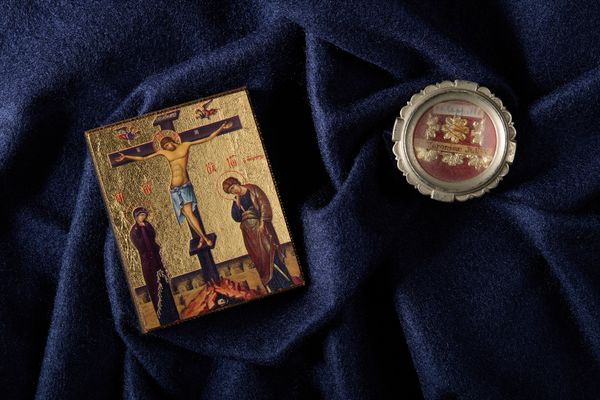For fifty years Ursula Giuliani lived as Sister Veronica in the Capuchin convent of Città di Castello in Umbria, Italy. With gritty determination tempered by humility, she led her sisters as novice mistress for thirty-four years and as abbess for eleven. St. Veronica governed the convent with obvious common sense. For example, so that her young novices would not get puffed up with pride, she forbade them to read the elevated works of the great spiritual masters. Instead she required them to study books on Christian basics. And as a most practical woman, she improved her sisters’ comfort by enlarging the convent rooms and having water piped inside.
Like Teresa of Ávila, another very down-to-earth saint, Veronica enjoyed an unusually profound communion with God. In the following excerpt from her Diary, she struggled to put into words her experience of the divine presence:
While I was about to go to Holy Communion, I seemed to be thrown wide open like a door flung open to welcome a close friend and then shut tight after his entry. So my heart was alone with him—alone with God. It seems impossible to relate all the effects, feelings, leaping delight and festivity my soul experienced. If I were to speak, for example, of all the happy and pleasant times shared with dear friends . . . , I would be saying nothing comparable to this joy. And if I were to add up all the occasions of rejoicing in the universe, I would be saying that all this amounts to little or nothing beside what, in an instant, my heart experiences in the presence of God. Or rather what God does to my heart, because all these other things flow from him and are his works.
Love makes the heart leap and dance. Love makes it exult and be festive. Love makes it sing and be silent as it pleases. Love grants it rest and enables it to act. Love possesses it and gives it everything. Loves takes it over completely and dwells in it. But I am unable to say more because if I wished to relate all the effects that my heart experiences in the act of going to Holy Communion and also at other times, I would never finish saying everything. It is sufficient to say that communion is a . . . mansion of love itself.
Veronica had a lifelong devotion to Christ crucified that eventually became manifested in physical signs. The marks of the crown of thorns appeared on her forehead in 1694 and the five wounds on her body in 1697. Veronica was humiliated by the stigmata itself and by her bishop’s rigorous testing of her experience. He removed the saint from ordinary community life and put her under constant observation. When he decided that the phenomena were authentic, he allowed her to return to normal convent life and continue her service to her sisters. In 1727, Veronica died of apoplexy at the age of sixty-seven.
Credits:
Discriptions of saints lives and biographies have been excerpted, summarized, or compiled from
Franciscan Media,
CatholicSaints.Info,
Catholic Online, and
Wikipedia.

